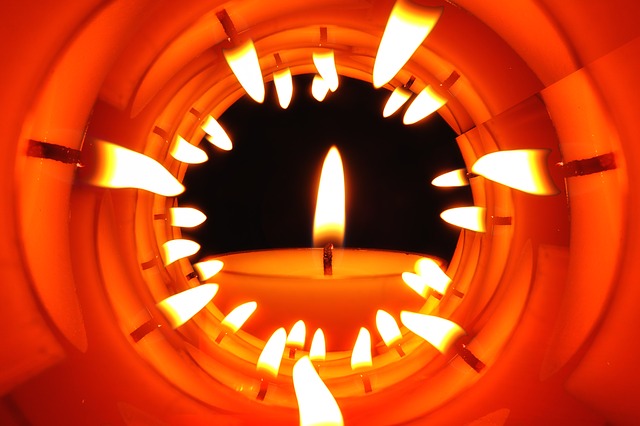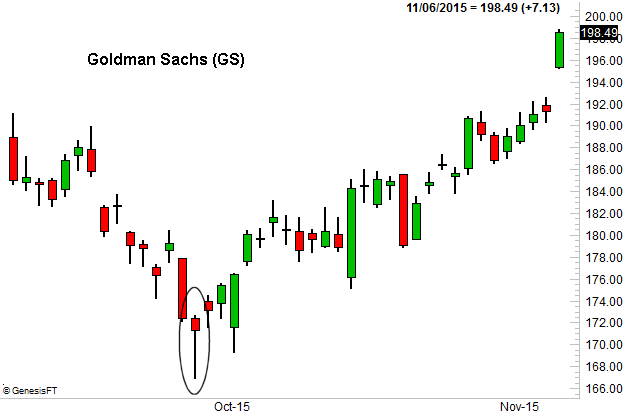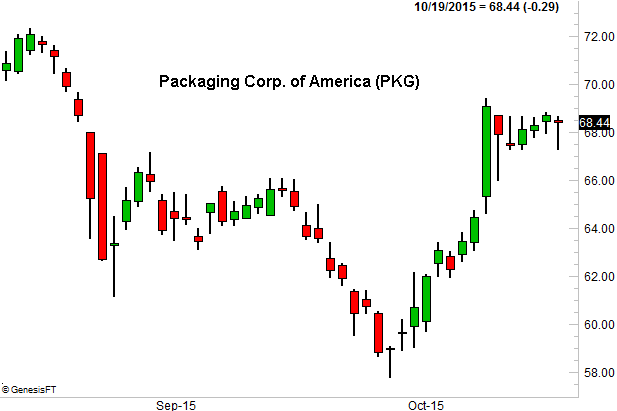Japanese Candlestick Charts - Hammer & Dragonfly Doji Patterns

Candlestick Trading: What is a Hammer Pattern? What is a Dragonfly Doji?
Although no trader has a perfect crystal ball, there are certain chart shapes and cues that are reliable indications of what's apt to happen next. One of the more reliable, and more comment, patterns any trader should recognize is the so-called hammer pattern... and its cousin, the dragonfly doji.
A hammer formation on a chart is just what it sounds like - a particular bar is characterized as one with a long tail, or handle, with a mallet or hammerhead shape at the top of the bar. Generally speaking, when such a pattern forms after a pullback, a bullish reversal is likely. Indeed, the very shape of this bar implies the market has moved from a net-selling environment to a net-buying environment.
A couple of examples will illustrate the idea.
On the chart of Goldman Sachs (GS) below, you can see a after a relatively significant downtrend, a long-tailed bar with an open and close very near the high for the day began a substantial uptrend. The low for the day essentially indicated the point where the number of buyers was finally greater than the number of sellers.
In the same vein as a hammer formation, a dragonfly doji indicates the pivot point between selling pressure and buying pressure... with an open and close at or near the high for the day, with a low making a long tail. When these form after a defined a dip, odds are good a rebound is brewing as it was in our example below of Packaging Corporation of America (PKG).
A perfect dragonfly doji, where both the open and the close are also the high for the day, is pretty rare. The spirit of the dragonfly doji is the key to its potency as an indicator of renewed bullishness.
It should also be noted that for hammer formations as well as a dragonfly dojis, a gap makes them even more likely to mark a reversal. That said, as with any technical analysis tools, one should look at the bigger picture and seek out confirming indicators to support the likelihood of a redirected trend.
Note that there are bearish reversal counterparts to the hammer pattern and the dragonfly doji. They're called a shooting star and a gravestone doji, respectively, and simply appear as mirror images of these two important candlestick trading patterns.


